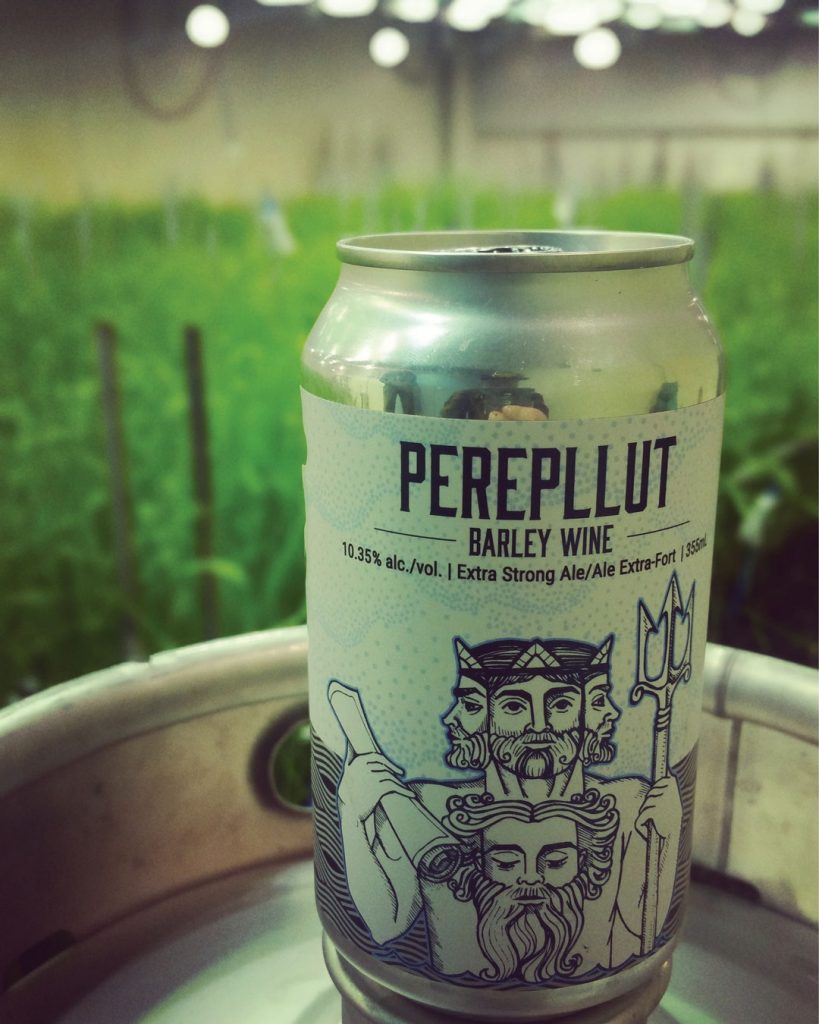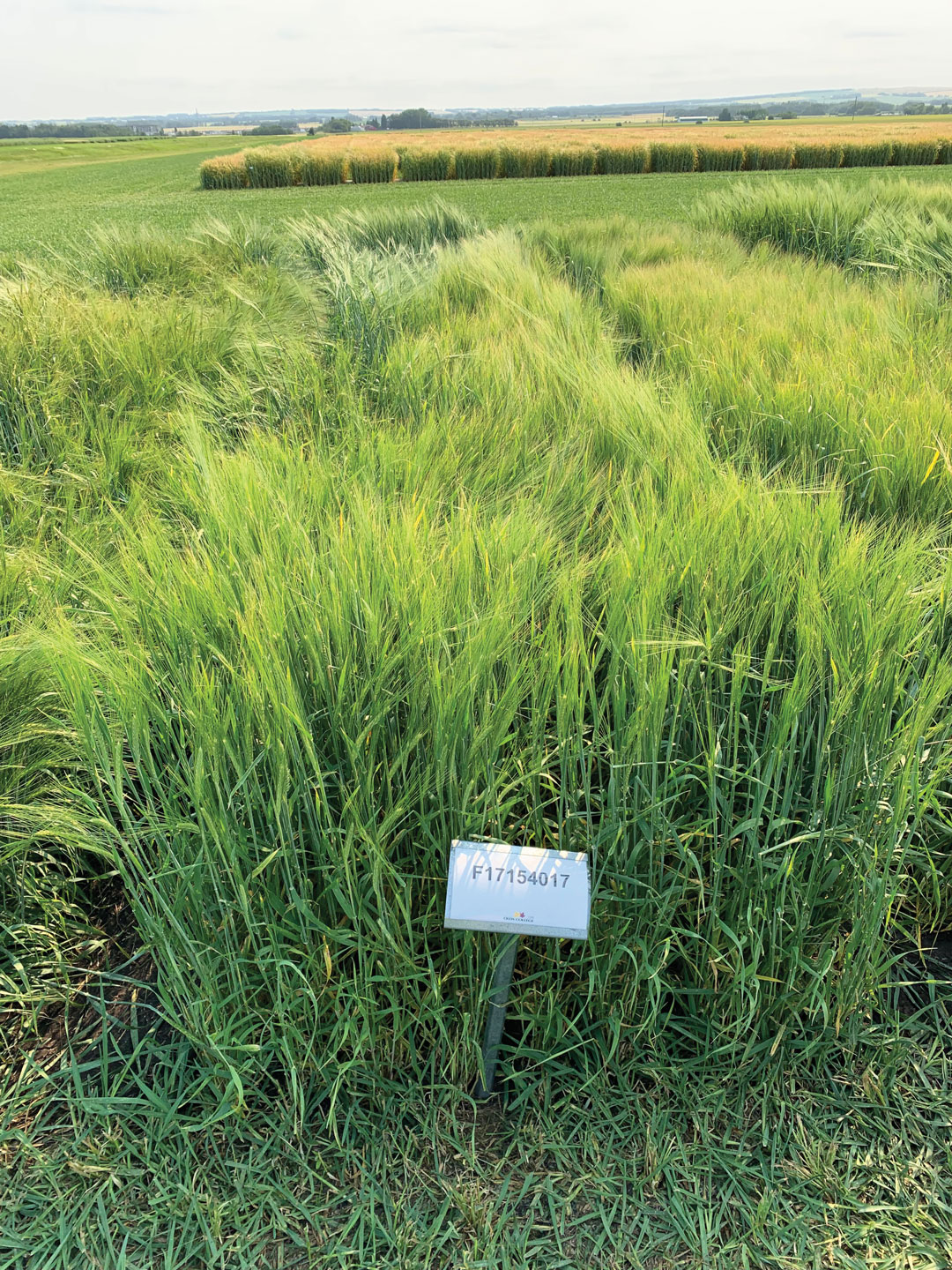ANCESTRY DNA
BY SARAH WEIGUM • ABOVE PHOTO COURTESY OF FLAVIO CAPETTINI
Old World malting barley genetics may soon be available to Alberta farmers, brewers and distillers in search of trademark flavour characteristics and carcinogen-free chemistry.
Western Canadian crop breeders aim to produce barley varieties that have very low or non-existent levels of glycosidic nitrile (GN). Common in the plants we eat, this organic compound is also a precursor to the production of the carcinogen ethyl carbamate (EC). With barley, GN develops during malting. Distillation of alcohol derived from this malt can produce varying levels of EC.
Because EC has the potential to cause cancer, it is regulated in many countries. The Canadian Food Inspection Agency monitors alcoholic beverages for EC content and a product could be recalled if it contains more than the designated limit. Despite the regulation of EC in beverages, modification of GN was not targeted by Canadian breeding programs.
In the U.K., however, all barley destined for production of single-malt whisky is non-glycosidic nitrile (non-GN). Farmers there have several well-adapted non-GN varieties to choose from. Certain Canadian craft distillers look to emulate the U.K. practice and employ non-GN barley. Certain of these businesses import non-GN malt. Home-grown, non-GN barley varieties would potentially be of value to the Canadian distilling industry.
The founder of Anohka Distillery in Parkland County, Gurpreet Ranu attests to this. In his first production run, Ranu will use 100 metric tonnes of Canadian malt produced by Rahr Malting and 25 metric tonnes imported from the U.K.
Ranu would seriously consider the use of Canadian produced non-GN barley. “I would probably move away from imported barley altogether,” he said. While there are ways to limit the production of GN in the malting process and EC in the distillation process, these methods are less certain to produce GN-free results and more complex than simply starting with non-GN malting barley.
“We can try to reduce the risk, but these are chemical reactions we can’t monitor in real time,” said Ranu, about the use of barley that contains GN. “We have to hope and pray all the precautions we take prevent the formation of ethyl carbamate in our final product. No distiller wants to produce carcinogens in their spirits.”
To the potential benefit of farmers and distillers alike, the Field Crop Development Centre (FCDC) at Olds College has registered the first known Canadian non-GN barley. When FCDC barley breeder Flavio Capettini learned of demand within the spirits industry for such varieties, he teamed up with Jennifer Zantinge, a molecular biologist.
Non-GN barley varieties grown in the U.K. were bred from European varieties that had a deletion in the gene that produces the specific type of GN that leads to the production of EC. “We looked at the pedigrees of various barley crosses, to see which had that particular non-GN parent from Europe,” said Zantinge. “Then we looked at the pedigrees of FCDC advanced lines and found those that had a non-GN parent. We screened them to pull out the lines that had that mutation.” Using molecular marker technology, they screened the DNA of barley crosses and varieties relatively quickly and inexpensively.
They found a non-GN variety under their own roof. TR14617 had been developed by former FCDC plant breeder Patricia Juskiw but not put forward for registration. FCDC completed the process and seed multiplication is now underway to allow further testing in malthouses. Capettini plans to cross this non-GN variety with other high-performing malting barleys to produce new ones that grow well on Prairie farms and have the non-GN trait distillers require.
Agriculture and Agri-Food Canada breeder Ana Badea has also produced several non-GN barley varieties at various stages of development. These include TR13235, which could receive support for full registration this year. Badea noted both TR13235 and TR14617 “represent an excellent foundation for the breeding of improved non-GN Canadian malting barley that will support new market opportunities in Canada and abroad.”

AN OTTER VARIETY TO CONSIDER
Because EC is generated through the combination of malting and distillation, it is generally not a concern within the brewing industry. However, craft brewers have their own wish list for barley breeders. It includes a domestic source of particular flavours found in heritage malting barley varieties.
To address this craving, Capettini works with English barley variety Maris Otter which, despite being commercially available since the 1960s, remains popular with beermakers for the rich flavour it produces.
Blindman Brewing of Lacombe primarily uses Alberta barley but occasionally imports malts from the U.K. and other parts of Europe, said co-founder Shane Groendahl. The brewer uses Marris Otter to make an English-style barley wine. “By using the traditional raw ingredients, we can get close to an homage of this beer,” he said, and described its flavour as “biscuity and toffee-flavoured.”
While its taste appeals to brewers and beer drinkers, growing Maris Otter is a non-starter for Prairie farmers. Fifty years behind current barley genetics, it’s also a winter crop adapted to the mild U.K. climate.
By crossing Maris Otter with contemporary European and Canadian varieties, Capettini hopes to blend flavour and an agronomic package in a high-performance variety that meets the needs of farmers and brewers. While he acknowledged it typically takes more than one breeding cycle to achieve the desired agronomic results, Capettini said initial crosses he has made using English varieties performed better than expected in test plots.
To evaluate the flavour of the final product, the FCDC team will carry out seed increases for promising lines. This will produce adequate grain supply to malt and brew test batches.
Groendahl is keen to experiment with an Alberta Maris Otter. “We see the benefit of the FCDC breeding program to bring forward new and interesting products agronomically, but also on the side of malt and flavour we can play with.”
Groendahl’s attitude speaks to the symbiotic relationship between Canadian craft beverage makers and barley breeders who develop the varieties they need. Even as they look across the Atlantic for inspiration, they have each other’s backs.







Comments